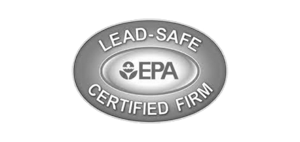Storms can cause a lot of damage. The National Oceanic and Atmospheric Administration (NOAA) says severe weather costs billions every year.
Storm damage means any harm from a storm. This includes damage to homes, businesses, cars, and more. Things like strong winds, tornadoes, heavy rain, hail, and snow or ice can cause damage.
It’s important to know what counts as storm damage. This helps homeowners and businesses prepare and reduce losses.
Key Takeaways
- Storm damage includes destruction to homes, businesses, and properties.
- Various weather conditions can cause storm damage.
- Understanding storm damage criteria is essential for mitigation.
- Homeowners and businesses can take precautions to minimize losses.
- Storm damage can result in significant financial losses if not addressed properly.
Types of Storms and Their Possible Damage
Knowing about the different storms and their damage is key for homeowners. Each storm can cause various types of harm. Being informed helps in spotting and fixing these issues.
Wind Damage
Wind damage is a common problem from storms. High winds can remove or loosen roof shingles, leading to leaks and structural problems. They can also break windows, harm siding, and knock down trees or power lines.
- Roof damage from missing or loose shingles
- Broken windows and damaged siding
- Fallen trees and power lines
Water and Flood Damage
Water and flood damage come from heavy rain, storm surges, or burst dams. Floodwaters can seriously harm structures and cause mold, which is bad for health. Water can also ruin electrical systems, appliances, and personal items.
- Structural damage to foundations and walls
- Mold growth and health risks
- Damage to electrical systems and appliances
Hail and Ice Damage
Hail and ice storms can cause special kinds of damage. Hail can break windows and harm roofing materials. Ice can weigh down structures and cause power outages. Frozen gutters can also harm roofs.
- Cracked windows and damaged siding
- Roof damage from hail and ice
- Ice dams and frozen gutters
Understanding storm damage helps homeowners prepare and respond to storms. Spotting storm damage is important for fixing things and filing insurance claims.
What Qualifies as Storm Damage in Ohio?
Storm damage covers many types of destruction from severe weather. Knowing what counts as storm damage helps with identifying storm damage. It also guides the repair steps and insurance claims in Ohio.
Structural Damage
Structural damage harms a building’s foundation, walls, or roof. This is dangerous and can cause collapses or safety issues. Look for cracks in walls or foundations, and doors and windows that are hard to open or close. Also, watch for water getting into the building’s structure. A detailed storm damage inspection is key to spotting this damage early.
Roof and Exterior Damage
The roof and exterior protect a building from storms. Damage here can let water and debris inside. Look for missing, damaged, or loose shingles, broken roof tiles, and gutter damage. Exterior walls, windows, and doors can also get hit by debris or water. Quick identifying storm damage in these spots can stop more harm.
Landscape and Property Damage
Storms can also hurt the landscape and property features. This includes uprooted trees, damaged outdoor furniture, and harmed gardens. These issues might seem minor but can be safety risks or lower property value. A full check after a storm should look at these areas to catch all damage.
Assessing and Documenting Storm Damage in Ohio
Checking storm damage is key to getting back on track. Homeowners need to carefully look over their property. This ensures they get all the info needed for fixes and insurance claims.
Safety First
First, think about safety. Stay away from dangers like downed power lines, water, and weak buildings. Keeping safe is the first step to avoid more harm.
Key safety precautions include:
- Staying away from downed power lines and reporting them to the utility company
- Avoiding areas with standing water due to electrical hazards or contamination
- Being cautious of weakened structures that could collapse
Conducting a Thorough Inspection
Doing a full check is important to find all storm damage. Look at the outside and inside of your home, including roofs, walls, windows, and gardens. It’s key to document each damage for insurance and repair plans.
A detailed storm damage checklist should include:
- Inspecting the roof for missing shingles, damaged tiles, or structural issues
- Checking walls and windows for cracks or breaks
- Assessing landscaping and outdoor structures for damage
Preparing Documentation for Insurance Claims
Good documentation is key for a successful insurance claim. Take clear photos of the damage, save receipts for quick fixes, and keep records of talks with insurance adjusters.
Effective documentation involves:
- Capturing clear, dated photos of all damage
- Keeping receipts for any repairs or services related to the storm damage
- Organizing records of communication with insurance companies
Conclusion
Knowing what counts as storm damage is key for homeowners and businesses. It helps them protect their property and deal with insurance claims well.
Storms can damage homes and businesses in many ways. This includes wind, water, and hail damage. If not handled right, these damages can cause big financial losses.
Being aware of storm damage types and how to document them is important. This way, people can protect their property and make the insurance claims process easier.
Understanding storm damage helps property owners spot risks early. They can then take steps to lessen these risks. This can help avoid big financial losses.






